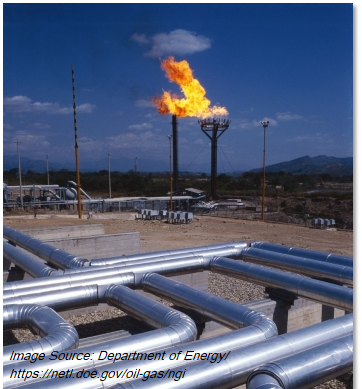EPA is holding 3 days of hearings on its proposed rule to reduce methane leaks from production sites. Mothers & Others’ Dr. Anne Mellinger-Birdsong spoke at the hearing today, the second day of hearings. Read below for what she said.
We encourage everyone who wants to support clean air and fight climate change to submit a comment in support of this rule. You can submit your own written comment at this website: EPA methane rule.
Dr. Anne’s Testimony:
Mothers and Others For Clean Air supports this proposed rule. It will save lives and improve health. It should be finalized quickly and made stronger by requiring companies to capture methane instead of letting them waste it with flaring, which also releases other hazardous air pollutants at the same time.
Methane is one of the strongest greenhouse gases that are causing climate change. Health professionals are already seeing health problems and deaths from the changing climate. Where I live in Georgia, we have experienced hurricanes made stronger by climate change, floods, wildfires, and too many days that are hotter than normal, all of which hurt our health. People are already experiencing health harm from climate change. It’s not in the future, it’s here now.
Numerous medical organizations including the AAP, AAFP, and ACP have policy statements declaring that climate change is a health emergency (1,2,3). Hundreds of medical journals have published articles showing that climate change is a threat to human health, which requires major action IN ORDER TO PROTECT HEALTH (4). This rule will reduce methane leaks and will help prevent health problems and deaths.
This rule is very good, but it still allows flaring which is both wasting the methane gas and creating more air pollution and greenhouse gases. We urge EPA to make it stronger and require oil and gas production companies to capture the methane instead of wasting it.
A 2017 study estimated that almost 18 million people lived within a mile of conventional and unconventional gas wells, including over 6 million Black, Indigenous, Latino, and Asian people, almost a million children, 3 million older people, and 3 million people living below the poverty line (5,6). All of these vulnerable groups are more at risk from both air pollution and climate change. A study from the University of Colorado found an increased risk of cancer of 8.3 per 10,000 people for those who live within 500 feet of a gas well, and exposure to multiple air hazardous air pollutants including benzene and alkanes (7). A study of children in Pennsylvania found that children whose birth residence was within 2km of a fracking well had twice the risk of developing leukemia (8). A study of elderly people receiving Medicare found that those living near or downwind of a fracking well had a 2-and a half fold increased risk of death (9). Other studies have found increased risk of prenatal, respiratory, and cardiovascular health problems (10).
In addition to direct health harms from oil and gas production, methane and the other VOCs that leak with it are substrates for ozone formation. Ozone damages lungs, exacerbates emphysema, and causes asthma attacks. This rule will protect health by reducing substrates for ozone formation.
In summary, Mothers and Others For Clean Air supports this rule, it will protect health and save lives. We urge EPA to make it even better by requiring companies to capture methane instead of wasting it with flaring.
References
2. https://www.aafp.org/about/policies/all/environmental-health.html
3. https://www.acpjournals.org/doi/10.7326/M15-2766
4. Atwoli, et al. Call for Emergency Action to Limit Global Temperature Increases, Restore Biodiversity, and Protect Health. N Engl J Med 2021; 385:1134-1137 DOI: 10.1056/NEJMe2113200 (OpEd published simultaneously in 200 journals)
5. Czolowski et al, Environmental Health Perspectives 2017, https://ehp.niehs.nih.gov/doi/10.1289/EHP1535
6. Proville et al, Population and Environment 2022, https://link.springer.com/article/10.1007/s11111-022-00403-2
7. McKEnzie et al, Environmental Science and Technology 2018, https://pubs.acs.org/doi/10.1021/acs.est.7b05983
8. Clark et al, Environmental Health Perspectives 2022, https://ehp.niehs.nih.gov/doi/10.1289/EHP11092
9. Li et al, Nature Energy 2022, https://doi.org/10.1038/s41560-021-00970-y
10. Currie et al, Science Advances 2018, https://www.science.org/doi/10.1126/sciadv.1603021
01/11/2023





